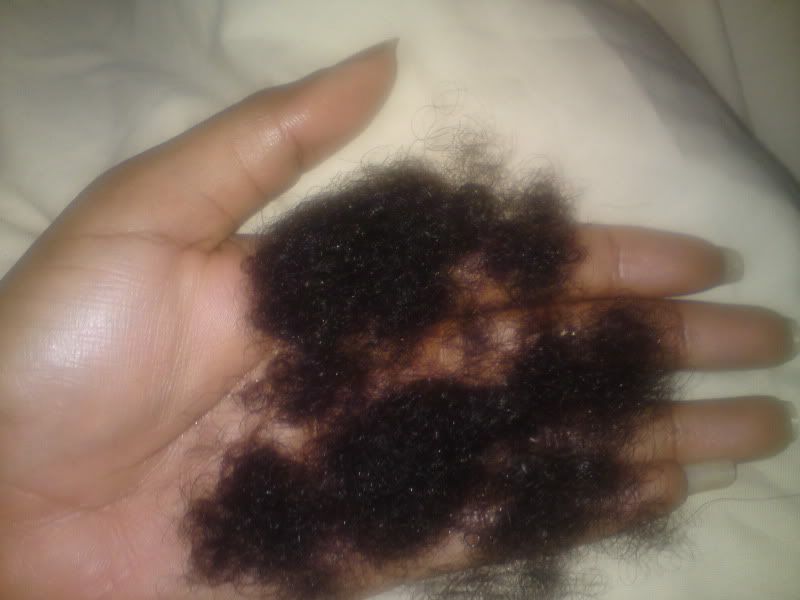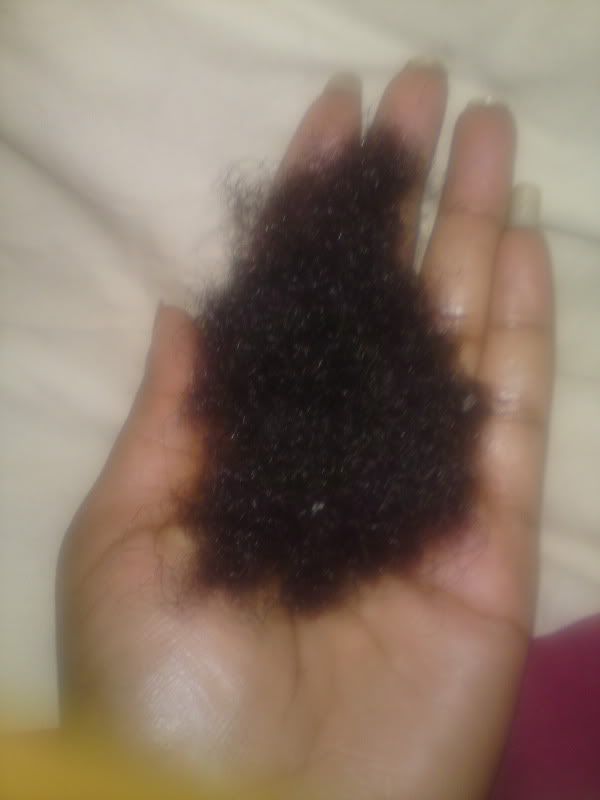HeavenlySkies
Active Member
Shedding is Normal
Believe it or not, shedding after starting a treatment is fairly common. In fact, more often than not, our users report increased loss a few weeks to a few months after starting Propecia or Rogaine (or both!). But what a shock it can be to those who don't expect it. They finally take that dive into the daily commitment of fighting their hair loss. They're finally ready to do something about it, and as hopeless as things may seem, they put all their trust in the clinical data. They have a few weeks of feeling a little better about things, hoping for the best, knowing they're doing all they can ... and then something goes wrong. They actually start to *lose* hair. At least that's how it looks. Instead of going forward, they're going backwards. The more level headed shedders decide to wait it out a few days, only to see it continue... and continue... and continue. The rest panic, or just throw in the towel entirely. They decide they are not "responders" to the treatment, that the treatment doesn't work, or quite simply that God has forsaken them. Fortunately, they're wrong on all three counts...
What exactly is Shedding?

In all cases, treatments or no treatments, shedding is not actually "losing hair". This is one of the most common misconceptions in the world of hair loss. Shedding is in fact just the transition of follicles from growth phase to resting phase. They don't fall out and die, never to return. They in fact "go to sleep", to return several months later. Hair follicles work in cycles as part of their normal processes. Even the person not losing his or her hair goes through the same cycles. The hair will grow for awhile, and it will rest for awhile. In the case of someone *not* using any treatments, but experiencing Androgenetic Alopecia (Male or Female pattern baldness), shedding is typically the continued cyclical process, combined with miniaturization. What does this mean? It means each time those hairs go dormant and come back, they come back weaker, thinner, and less pigmented, ultimately resulting in the perception of less hair and more scalp skin showing. There are theories out there as to why hair seems to go "all at once" for those losing hair, but they are still just theories. The most common one is the theory that those with androgenetic alopecia see more of a synchronization of dormancy. Meaning - more hairs go dormant at the same time, ejecting the existing hair and shutting down temporarily. Either way, the moral of the story is the same: Shedding is not losing hair. Its dormancy. And it is up to you as to whether those hairs cycle back in thicker and stronger, or thinner and weaker. That's where using a DHT inhibiting, or growth stimulating treatment comes into play.
Shedding *because* of my Treatment?!?
Its possible, and as mentioned above, rather common. Surprised? Its actually the most common reason why people think hair loss treatments don't work! If you start a new treatment like Rogaine or Propecia, you probably will shed, but the amount of hair shed varies from person to person. It has long been suspected that there is an increase in shedding in the first 3 months or so. Recently, some studies using a digital phototrichogram (Trichoscan, Marburg, Germany) proved that there was indeed a quantifiable increase in shedding and a corresponding loss of hair density in the first 3 months of minoxidil use. However, by the 6 month stage the subjects were shown to have regrown the lost hair and had increased hair density compared to that recorded at the start of treatment. By 12 months after starting minoxidil use their hair density was much improved and the diameter of the hair fibers was thicker than at the start of treatment and as compared to controls who did not receive treatment. This small study proves what has long been suspected and frequently discussed on hair loss forums, that there is an initial shed phase when first starting minoxidil use.
How long will it last?
Shedding is temporary. If the individual continues their treatment consistently, despite the seeming despair and loss of hope, shedding will end and the lost hair should be replaced.
Why does it happen?

Although we do not know exactly why the shedding occurs, the most likely explanation is due to how the hair follicle “organ” operates. Hair follicles are relatively inflexible in their anagen, "hair producing" state. In response to additional stimuli the growing hairs may be able to increase their growth rate or increase the diameter of the hair fiber produced a little, but it is not possible for a hair follicle to undergo big changes in size while producing hair fiber. What ends up happening, is that when that follicle gets hit with a growth stimulant like Minoxidil, it is given a very strong signal to change size (expand) and increase activity. The rule of the follicle is that it must then stop, and start over. The existing hair is ejected, the follicle goes into dormancy, and begins to restructure its processes to produce a thicker, stronger hair that can produce a bigger (thicker) hair fiber.
Shedding is a sign that the Treatment is Working
Howso??? When Rogaine is applied to stimulate hair follicles, the follicles must regress, shed the old fiber, rearrange themselves into a bigger hair follicle, and start making a new, improved fiber. This would inevitably lead to a temporary shed phase. You're seeing your hairs respond. Its unfortunate that the first sign of new hair growth is seeming hair LOSS, but that's the way it works, quite often.
There is a belief among some dermatologists that an initial shed phase when first starting to use a treatment for hair loss is inevitable regardless of the treatment used. Because of the hair follicle’s inflexibility in changing the nature of hair growth mid stream, for any drug to promote hair growth it must involve hair follicles entering telogen to rearrange themselves into a larger follicle under the influence of the drug. However, certainly, the shed phase with minoxidil use can be very apparent in some people.
But "BOB" on xxxx.com told me that the shedding will NEVER STOP!
There are a few who claim that using treatments like Propecia and Minoxidil can cause a persistent shedding that lasts longer than the first three months. While there is no hard research evidence to support these claims, it is always possible that an individual may have an adverse reaction to a drug. We are each unique because of our different genetic make up and the different environments in which we live. This means that there are somewhat different responses to the same drug when used by different people. It is almost inevitable that a very few people will have a bad reaction to a drug. It may be that for a few minoxidil does more harm than good and follicle growth cycles are adversely affected. If this is the case, stopping use of the drug should allow the body to recover. However, it is most likely that many of the claims for persistent shedding actually come from those who are experiencing the expected shedding in the first 3 months, have not been consistent with their dosages, or have been continually adding or taking away from their treatment regimen.
In Conclusion - Don't Count Hairs
In terms of understanding hair loss, the nature of shed hair and the rate of shedding is not very important, although it may be disturbing to see. Shedding is natural, everyone sheds hair daily whether affected by hair loss or not. You can shed up to 100 scalp hairs a day without having any scalp hair loss. A few people may shed more than this but still not develop baldness. To understand the development of hair loss the main factor to consider is the rate of hair growth and replacement, not so much the rate of shedding. Some people have a high rate of shedding but also a high rate of hair growth. The result is no net loss of hair on the scalp. Some people have a low rate of hair shedding and a low hair regrowth rate. The result is similarly no alopecia development. The problem comes when someone sheds hair at a faster rate than it is replaced. This is the scenario where baldness develops. You can have a normal or even a low shed rate and still develop baldness. If the hair is being shed faster than it regrows then alopecia will develop. So the amount hair shed each day/week/month is a poor diagnostic indicator of hair loss. To define alopecia you must look at what is left on the scalp. That is where it counts.



